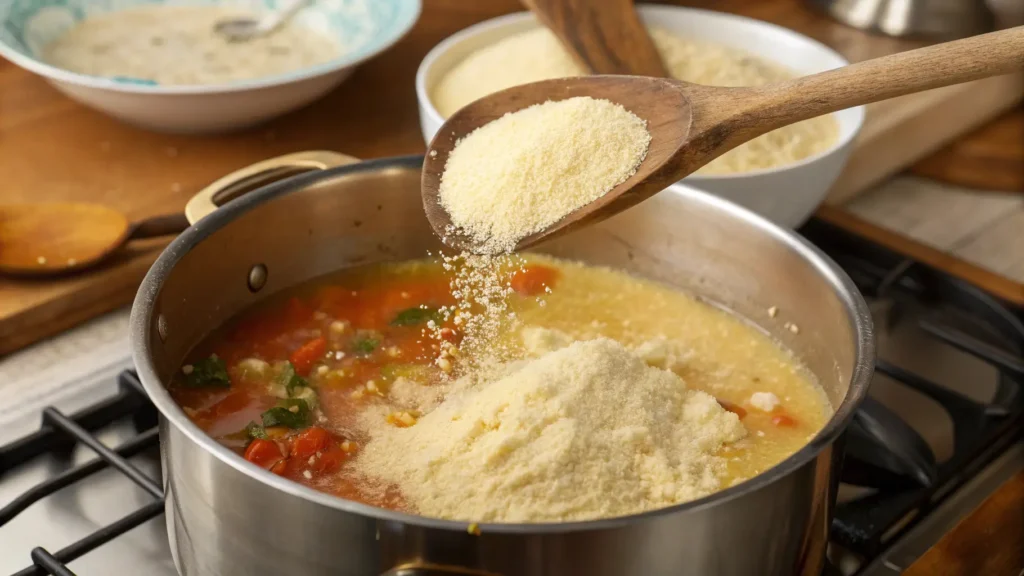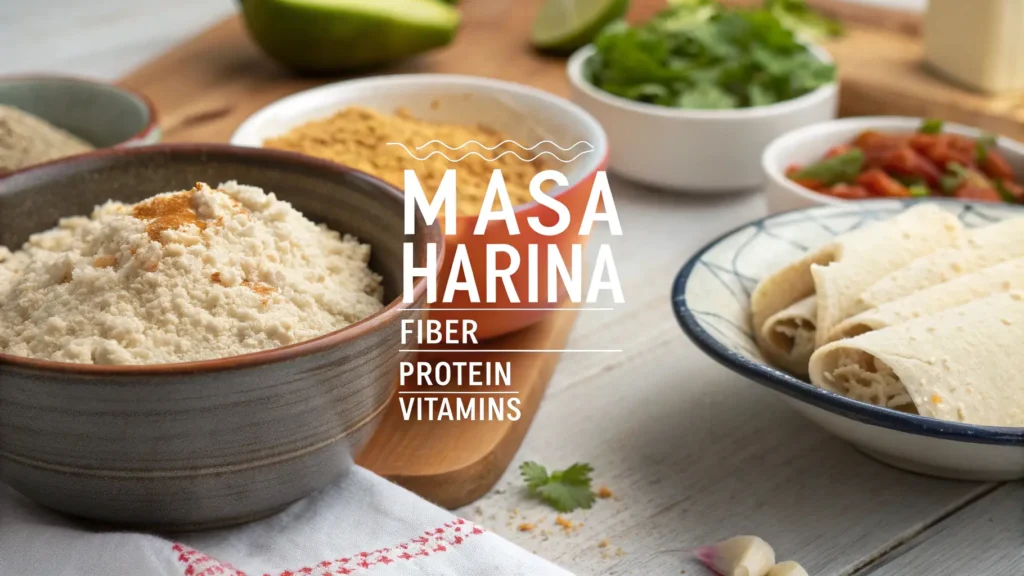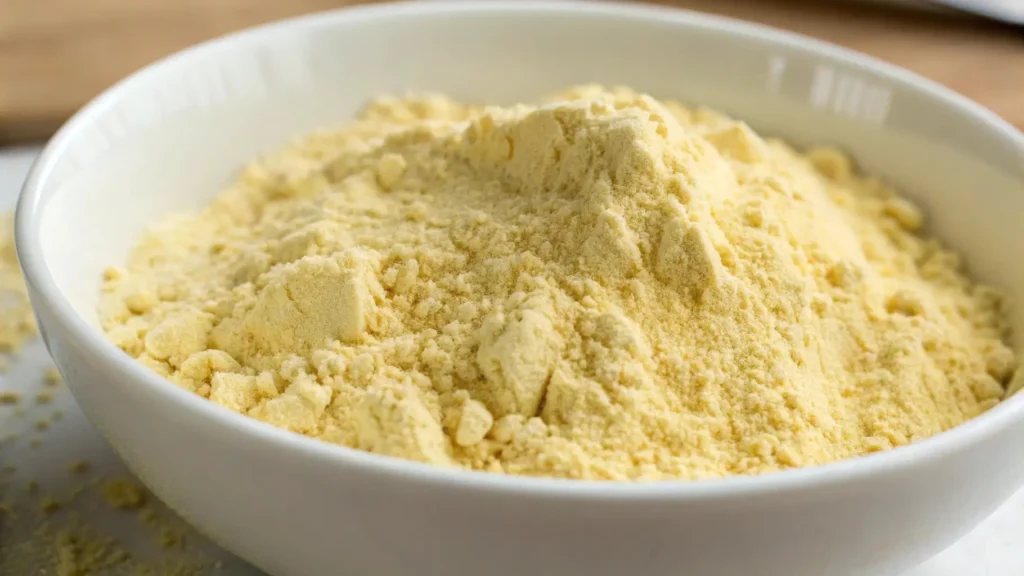When it comes to crafting the perfect bowl of soup, the right thickener can make all the difference. While traditional options like flour and cornstarch are common, can you use masa harina to thicken soup? Absolutely! Masa harina, a fine flour made from nixtamalized corn, offers a flavorful and effective way to enhance soups and stews.

In this article, we’ll explore how masa harina works as a thickener, the best soups to pair it with, and tips for achieving the ideal consistency. By the end, you’ll have a deeper understanding of why masa harina deserves a spot in your pantry.
The Role of Masa Harina in Thickening Soups
How Masa Harina Works as a Thickener
At its core, masa harina functions as a natural thickening agent due to its corn starch content. When mixed with water, it forms a slurry that blends smoothly into liquids, creating a velvety texture. Unlike cornstarch or flour, masa harina adds a subtle corn flavor, enhancing the overall taste of the dish.
The science behind its effectiveness lies in nixtamalization—a process where corn is treated with limewater. This unique preparation not only makes masa harina nutrient-rich but also gives it the thickening power that’s perfect for soups.
Comparing it to other thickeners, masa harina stands out for its ability to enrich soups without altering their fundamental flavors. It’s particularly ideal for recipes where a touch of corn flavor complements the dish.
Types of Soups That Benefit from Masa Harina
Certain soups practically beg for the addition of masa harina. Tex-Mex and Latin American recipes, such as tortilla soup or pozole, pair wonderfully with its subtle corn essence.
For example, adding masa harina to chili or black bean soup thickens the broth while enhancing the dish’s hearty flavor. It’s also commonly used in mole-based stews, where its creamy texture beautifully balances rich, complex spices.
In short, whether you’re whipping up a classic chicken tortilla soup or experimenting with fusion flavors, masa harina can elevate your creation from good to unforgettable.
Next, we’ll delve into how to prepare and use masa harina effectively for thickening soups.
Steps to Use Masa Harina for Thickening Soup
Preparing Masa Harina for Soup
To answer the question, “Can you use masa harina to thicken soup?”, you first need to know how to prepare it correctly. The process begins with making a slurry—a smooth mixture of masa harina and water or broth.
Start by whisking one to two tablespoons of masa harina with an equal amount of cold water. This step ensures that the flour dissolves evenly, preventing lumps from forming. Once your slurry is ready, it’s time to incorporate it into your soup.
Adding masa harina gradually allows you to control the thickness of the soup. Stir it into the broth while it’s simmering, letting the heat activate the thickening process. Within minutes, you’ll notice a creamy, velvety texture forming.
When and How to Add Masa Harina During Cooking
Timing is everything when using masa harina. It’s best to add the slurry toward the middle or end of the cooking process. Adding it too early can result in over-thickening or an uneven consistency.
For heartier soups, like chili or pozole, mix the masa harina slurry into the pot 10–15 minutes before serving. Stir continuously to ensure even distribution, and watch as your soup transforms into a rich, satisfying dish.
By following these steps, you’ll not only achieve the perfect texture but also enhance the flavor profile of your soup.
Nutritional Benefits of Masa Harina

Health Profile of Masa Harina
Masa harina isn’t just a functional thickener—it’s a nutritious one too. Made from nixtamalized corn, it’s rich in essential nutrients like calcium, iron, and dietary fiber. Unlike all-purpose flour, masa harina offers more than just carbohydrates, making it a healthier choice for thickening soups.
For those following gluten-free diets, masa harina is a safe and tasty alternative to traditional flour. Its natural origin and processing make it suitable for individuals with dietary restrictions.
Is Masa Harina Gluten-Free?
Absolutely! One of the standout benefits of masa harina is its gluten-free nature. For anyone with celiac disease or gluten sensitivity, it’s a reliable option for adding body and flavor to soups without the worry of adverse reactions.
So, can you use masa harina to thicken soup while maintaining a healthy diet? The answer is a resounding yes. Its nutrient-rich profile and gluten-free properties make it an excellent choice for both taste and health.
In the next section, we’ll explore potential challenges and solutions when using masa harina, ensuring your soup-making process is seamless.
Common Challenges and Solutions in Using Masa Harina

Over-Thickening Issues
Using too much masa harina can lead to a soup that’s overly thick or heavy. While some dishes benefit from a rich texture, others can feel stifled by an excess of masa harina. The key is to start small—add a little slurry at a time, stirring and observing the consistency as you go.
If your soup becomes too thick, don’t worry. Adding a bit more broth or water can restore balance without compromising flavor. For best results, always test the consistency before serving.
Flavor Considerations
Another challenge is balancing the natural corn flavor masa harina brings to a dish. While it enhances soups like tortilla soup or chili, its taste might overpower delicate broths.
To avoid this, consider the overall flavor profile of your soup. A teaspoon of masa harina is enough to lightly thicken without altering the flavor too much. Additionally, incorporating complementary spices like cumin or chili powder can harmonize the corn flavor with other ingredients.
FAQs About Using Masa Harina in Soups
Can You Use Masa Harina in Non-Latin Soups?
Yes, masa harina can work in non-Latin soups, but its distinct corn flavor needs to complement the dish. For example, it’s great for thickening creamy soups or stews with earthy or spicy notes, but it might not blend as well with delicate French or Asian broths.
What’s the Difference Between Masa Harina and Cornmeal?
While both come from corn, masa harina undergoes nixtamalization, which gives it a finer texture and a unique flavor. Cornmeal, on the other hand, is coarser and lacks the same thickening properties. When thickening soups, masa harina is the preferred choice because it dissolves smoothly and enhances the flavor.
Does Masa Harina Change the Soup’s Flavor Significantly?
Masa harina adds a subtle corn flavor to soups, which can elevate certain recipes. However, if used sparingly, its impact on flavor is minimal, making it suitable for a wide range of dishes.
For more inspiration, check out Taco Soup Frios Recipe for a delicious take on incorporating masa harina into hearty soups!
Conclusion: Why Masa Harina is a Perfect Soup Thickener
Summarizing the Versatility of Masa Harina
Can you use masa harina to thicken soup? Without a doubt, it’s a versatile and flavorful addition to any kitchen. Its unique properties not only thicken soups seamlessly but also enhance their taste with a subtle corn essence. Whether you’re making traditional Latin dishes or experimenting with new recipes, masa harina proves to be a reliable and creative thickening agent.
From the rich, hearty textures of pozole to the creamy consistency of tortilla soup, masa harina elevates your cooking in ways traditional thickeners simply cannot. Its gluten-free nature and nutritional benefits make it a perfect choice for health-conscious cooks.
Why You Should Try It Today
Adding masa harina to your pantry is an easy step toward diversifying your cooking techniques. The next time you’re crafting a comforting bowl of soup and wondering how to improve its texture, remember this versatile ingredient. It’s more than just a thickener—it’s a way to bring depth and authenticity to your dishes.
So, whether you’re a seasoned chef or a home cook exploring new flavors, give masa harina a try. It just might become your secret weapon for creating unforgettable soups.

